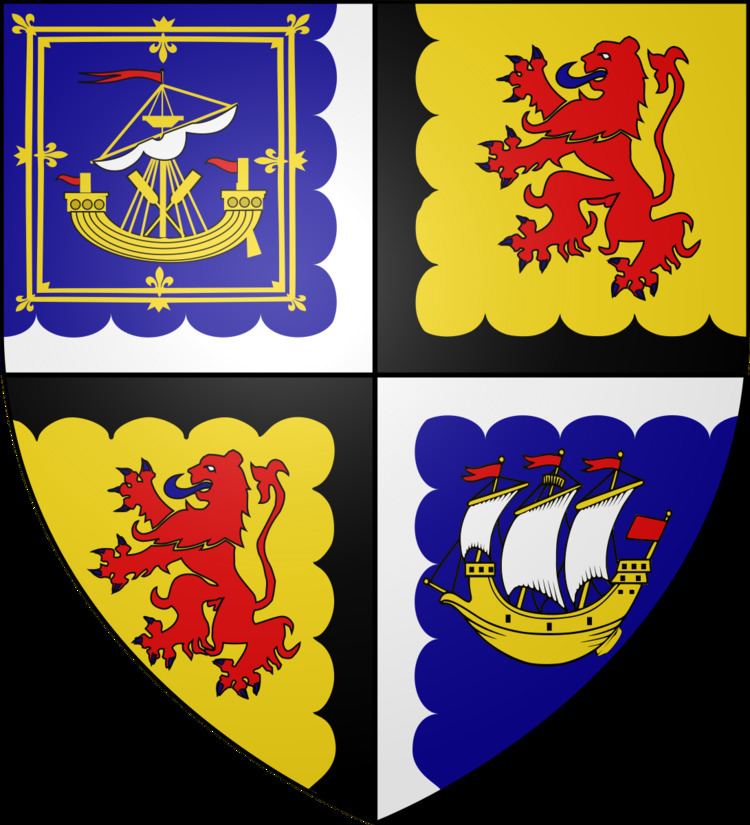 | ||
The Earl of Caithness is a title that has been created several times in the Peerage of Scotland, and has a very complex history. Its first grant, in the modern sense as to have been counted in strict lists of peerages, is now generally held to have taken place in favor of Maol Íosa V, Earl of Strathearn, in 1334, although in the true circumstances of 14th century, this presumably was just a recognition of his hereditary right to the ancient earldom/mormaership of Caithness. The next year, however, all of his titles were declared forfeit for treason.
Contents
- Earls of Caithness First Creation c 1334
- Earls of Caithness Second Creation c 1375
- Earls of Caithness Third Creation 1452
- Earls of Caithness Fourth Creation 1455
- References
Earlier, Caithness had been intermittently held, presumably always as fief of Scotland, by the Norse Earls of Orkney, at least since the days of the childhood of Thorfinn Sigurdsson in c.1020, but possibly already several decades before. The modern reconstruction of holders of peerage earldoms do not usually include those of Mormaerdom of Caithness, although there is no essential difference between them and, for example, those of mormaers of Lennox, mormaers of Strathearn and mormaers of Angus.
The next grant after Maol Íosa was to David Stewart, a younger son of Robert II of Scotland. His heiress, Euphemia, resigned the title in 1390 in favour of her uncle Walter, 1st Earl of Atholl. Walter himself resigned the title in 1428, in favour of his son Allan, but he retained the earldom of Atholl for himself. Upon Allan's death, Walter again came to hold both earldoms. However, both were lost when he was executed for high treason in 1437, his titles being forfeit.
The third creation of the title was for Sir George Crichton in 1452, but he surrendered the title in the same year. The final creation of the earldom was made in 1455 for William Sinclair, 3rd Earl of Orkney. He surrendered the Orkney title and all associated lands to James III in 1470, in return for the Castle of Ravenscraig, in Fife. James III had in 1469 received the rights of the king of Norway to Orkney territories as pledge of dowry of his wife Margaret of Denmark. In this way, the Scottish crown tightened its grip to Orkney and Shetland, a former Norwegian territory, by moving all other important holders away. Six years later, Earl William wished to disinherit his eldest son, who was known as "The Waster." Therefore, so that his earldom would not pass to him, he resigned the title in favour of his younger son, another William. General Arthur St. Clair was reportedly descended from the 4th Earl of Caithness.
George, sixth earl of the Sinclair line, was the last earl to cause a disturbance in the normal succession of the title. In 1672, he agreed that, at his death, all of his lands and titles would pass to Sir John Campbell, who was his creditor. In 1677, the sixth earl died, and King Charles II granted him a patent creating him Earl of Caithness. Later, however, the sixth earl's heir, also named George, was confirmed in his titles by the law. Therefore, in order to compensate for the loss of the earldom, Charles II created Campbell Earl of Breadalbane and Holland. Thereafter, the earldom of Caithness has passed solely within the Sinclair family, without any further resignations or other irregularities.
The Earl of Caithness also holds the title of Lord Berriedale, which was created in the Peerage of Scotland in 1455. That title is used as a courtesy title for the earl's eldest son and heir.
Earls of Caithness, First Creation (c. 1334)
Earls of Caithness, Second Creation (c. 1375)
Earls of Caithness, Third Creation (1452)
Earls of Caithness, Fourth Creation (1455)
The heir apparent is the present holder's son Alexander James Richard Sinclair, Lord Berriedale (born 1981)
